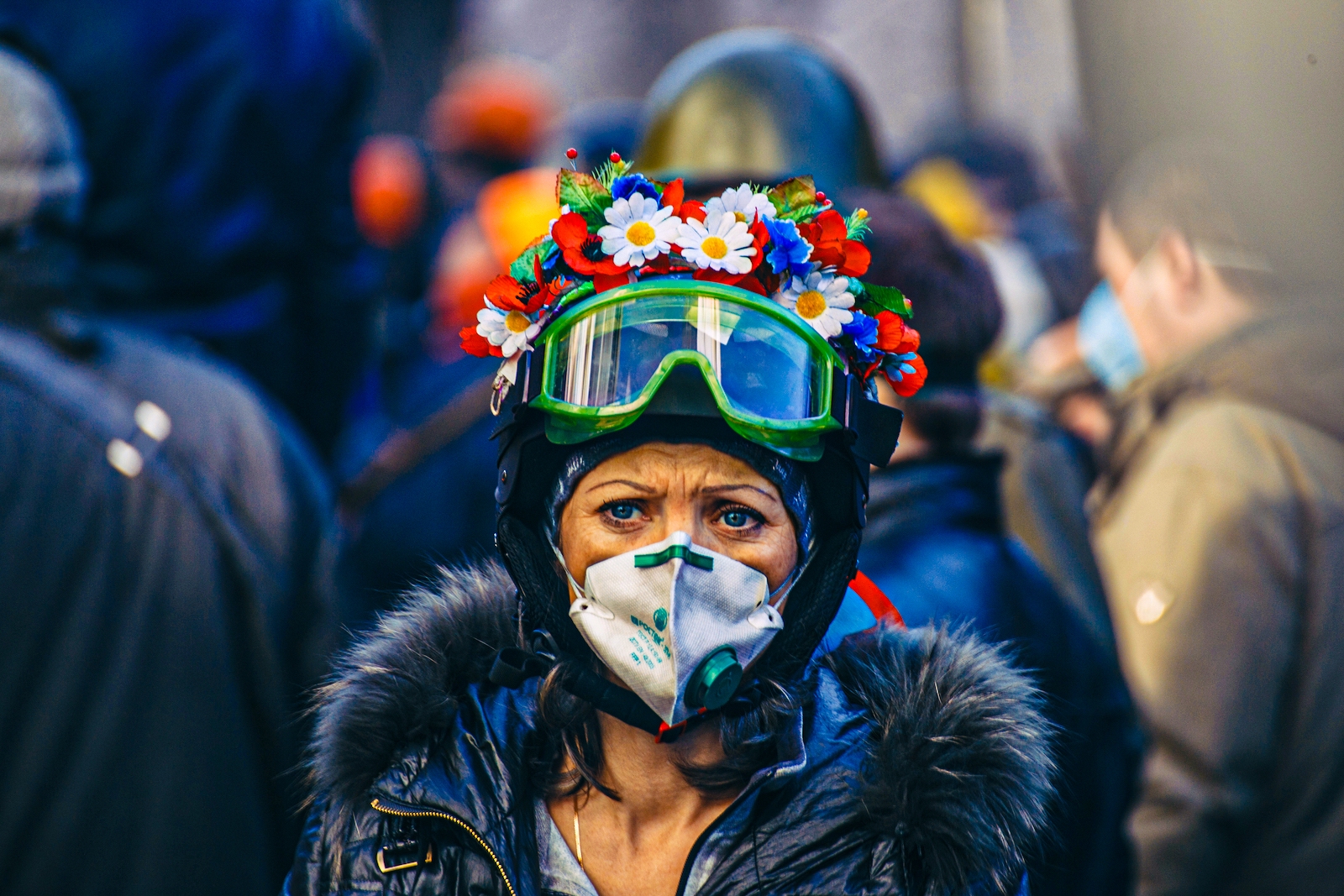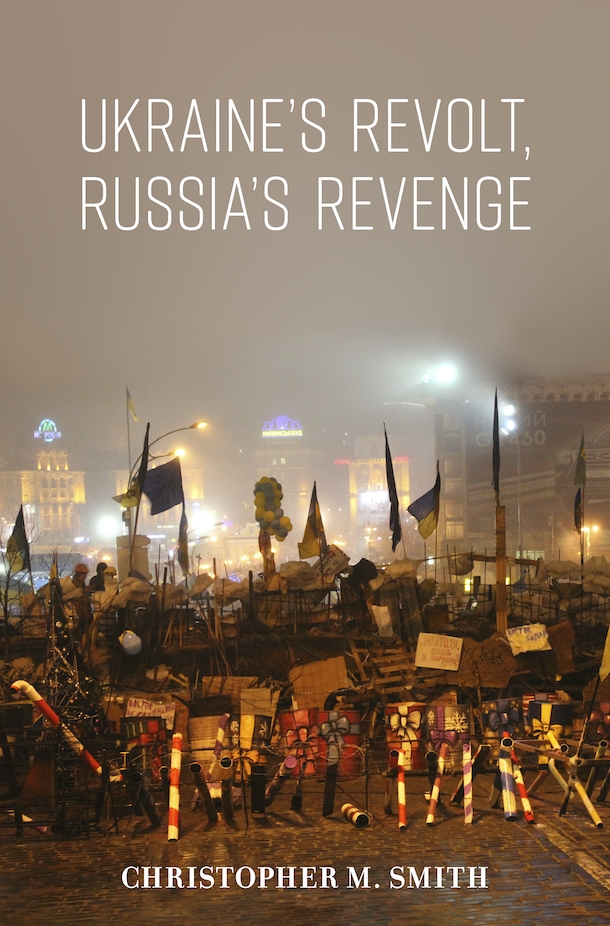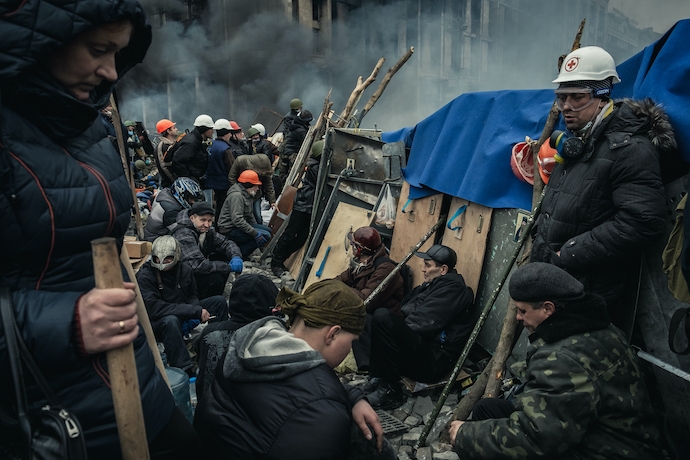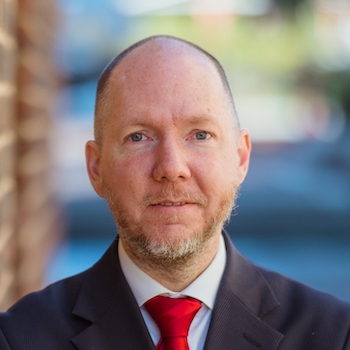
Books
‘Maidan Behind the Scenes’
That Friday night, my mother-in-law was staying with the kids, and Natalya and I had tickets to see Eugene Onegin at the National Opera. With music by Tchaikovsky and a story based on Pushkin, it was difficult to think of any entertainment more Russian than watching Eugene Onegin. After the opera, Natalya returned home, and I walked downhill toward Maidan until I caught sight of Ihnat.
Ihnat helped me find Dmytro, who was standing with several other young men. All wore homemade armor, much of which looked like haphazard plastic sheeting duct-taped together for a last-minute roller derby match. Dmytro smiled broadly and wrapped me in a bear hug. “Come on,” he boomed. “There’s a lot to see. We’re fighting for our country. I bet you’ve never seen anything like it.”
Walking over to Kyiv’s city hall, Dmytro beamed with pride, talking about the city-within-a-city on Maidan. “You know, Maidan is the only part of Kyiv with effective snow removal. We’re all volunteers, and we’re more effective than normal city services. Trash removal, food delivery—all volunteer. We cannot give [Viktor] Yanukovych an excuse to wipe us out, such as keeping too much trash piled up.” But it was clearly more than that. Showing that the protesters could deliver basic services themselves was not just a point of pride but one way to show a Ukraine that worked, even if on a very small scale.
“No drinking is permitted on Maidan, Chris. Can you believe it? Strictly enforced by the SDF.”
This part was difficult to believe. Generally, in any group of three men out in public in Kyiv, at least one would be drinking, but more normally all three. Alcohol was a way of life. But inside the makeshift walls, life and priorities indeed seemed different.
The facade of city hall bore just a few signs of the fight that had raged there several nights before when Berkut [police] attempted to storm the building—mostly paintball splatters and some broken windows. Inside, the building was heavy with the smell of cooked cabbage from a free food station on the first floor. From the top of the stairs directly ahead, the rambunctious folk songs of a group of sturdy, mustached older men in traditional Ukrainian outfits echoed through the hall. The building had become a potent symbol of Euromaidan after protesters had successfully held off riot police a few nights before. As we walked up the stairs, Dmytro recalled that night: “You know, it was the Lviv paintball guys who really deserve the credit. Those jokers spend most of their weekends running around in the forest shooting rubber bullets at each other just for fun. They practiced defending this building for days ahead of time. When the moment came, they were brilliant. That was the hour they had been waiting for, and for a very long time.”
In the large, second-floor hall, hundreds of protesters slept while others watched the news on a large projection screen. In the front of the cavernous room, three intellectual-looking Middle-aged men were chatting with [a] passersby at an impressive desk labeled “City Self Government.” The longest line was at the registration desk where new arrivals could volunteer for jobs within the Euromaidan area. At another desk, two lawyers offered free legal help. A large clear fiberglass box for cash donations sat on a nearby desk, nearly full. “Don’t put any money in the box,” joked Dmytro. “Someone would take a picture and say that the U.S. was funding Euromaidan. They’d kill for that kind of propaganda.” Dmytro looked proudly around the operation. “Self-organization. All of it. We will prove that we are serious and can organize. Let’s go.”

Dmytro led us out of city hall back toward the center of the protest camp. At that point, city hall was still a Maidan outpost outside the growing protest area. Several SDF looked at us as we exited the gap in the barricades, but they asked no questions. “Just ‘face control,’” said Ihnat. “We don’t look like titushky or provocateurs.”
Dmytro snickered. “One funny thing that we see a lot are titushky from the anti-Maidan who slip into Euromaidan food stations. They sneak in, and keep getting more helpings. They smile like they’ve really gotten away with something, which is funny because we know exactly who they are. We tell them to bring their friends, perhaps they’ll learn something about us. They still think that they are very sneaky and clever.”
Yellow and blue light rained down from the large electric signboard over the square displaying waving Ukrainian and EU flags. Dmytro led us to a large military-style tent. “The Afghan war veterans gave us the tent, and the space on the square,” he commented, lifting the flap and leading us in. About ten young men inside the roomy tent were installing warehouse-style shelving units with small tablet PCs lined up on each shelf. “This is the IT community’s contribution. The equipment is all donated. This is where my production company is making our contribution too. We’ll be up and live later tonight, and everyone here on the square will be able to come in, use social media, and let the world know why they are here and what they are doing. Kids need to let their parents know that they are OK. And we need the world to know what we’re fighting for and what this all means.”
He looked over the work of the young techies. “Now the tech community will have a place to sleep on Maidan. It’s our own little nest where we can invite our brothers-in-arms. We hacked the big screen over the square, and that showed folks that we tech people could be fun and useful. In a day or two, we’ll have free Wi-Fi throughout the square. We all give what we can to the effort.” He introduced me to a few of the young guys, who all seemed more interested in getting the tablets networked than chatting with some random foreigner.
Emerging from the tech nest into the cold night, we turned toward the “Afghantsi” tent—the domain of the aging, but unquestionably tough, Afghan war veterans. At the tent door, a leathery older man in tobacco-scented fatigues crisply introduced himself: “Volodymyir, Tent Two commandant. State your business.” Dmytro introduced me as a diplomat, and Volodymyir, Tent Two commandant, somewhat sheepishly apologized for the small amount of mess inside of the very tidy tent. Dmytro asked him about the struggle on the square on Tuesday. “It was intense,” said Volodymyir. “But there was no fear. We have a saying in our business that you can only die once.”
Though a young rock music producer, Dmytro clearly reveled in their company. “Just look at their faces,” he beamed. “With them on our side, could we really lose?” We all sat and drank hot tea out of little glass cups in metal holders. The Afghantsi and the young tech kids didn’t seem to have much in common outwardly. But somehow on the square, they were brothers, sharing tents, real estate on the granite paving stones, and Wi-Fi. The Afghantsi made the tech kids feel tough, the tech kids made the Afghantsi feel smart and modern. It was just one of a million small alliances on the square, contributing to building the community that was Euromaidan.

Afterward, Dmytro led us over to the Instytutska Street barricade, where on Tuesday night hundreds of Berkut used their riot shields to push onto the square. At the barricade, a front line of SDF in hard hats stood, gazes fixed outward from the square toward the lines of riot police several hundred feet away. Like the barricades, the SDF looked haphazardly arranged in height, age, and stature. Under their orange helmets, their clothes and “equipment” varied from soccer knee pads to sticks to heavy patched coats to balaclavas completely covering a few faces. But all of the volunteer defenders of the square looked determined and ready. At exactly 11:00 p.m., another equally diverse and homespun group in hard hats marched up, keeping time with their heavy boot steps. The SDF guarding Instytutska then turned on command to leave the barricade. Only then did I recognize that this was a changing of the guard, with a rough precision designed to instill confidence in the SDF’s ability as defenders. Ihnat and Dmytro left me for a few minutes to tend to some issues in the tech tent.
I wasn’t going to be able to talk with those standing watch, so I approached some of the other men who were there to support the SDF. “This group will be there until 2:00 in the morning,” a tall man with silver hair said to me. “Three-hour shifts. If it keeps getting colder, we may go down to two-hour shifts even though the guys argue they can take it. They want to show that they are tough, but we need to keep them healthy and ready.”
I introduced myself, and the silver-haired man peppered me with questions about running a small business in the United States. “So I own a few auto repair shops in central Ukraine. I spend most of my time trying to look unprofitable to ward off the racketeers and crooked tax guys. It’s not too hard—lots of the time, with all the bribes I pay, my business really is unprofitable. So what’s the business licensing process like in America?” One of his friends, a shorter bald man came over to listen. “At how many points do American businessmen need to pay bribes for imports? I’d be happy just to have a single point at which to pay one bribe—that would be fine. It’s the different levels of bribes that really kill you. You pay off one guy, but somehow don’t realize that you later need to pay off his boss too, and you hadn’t budgeted for that.”
“You see why we’re here,” his friend sighed. “Younger people have their reasons, older people have theirs. For us, we just can’t make a living under this system. We need a change. I just feel like we can’t live like this anymore.”
The silver-haired man nodded, then spoke directly to me. “There is something you can do. Get your government to sanction Yanukovych—sanction him and his dirty lieutenants hard. Money is the beginning and end of what these guys care about. They need foreign places to hide their money, and foreign locations to take their girlfriends and mistresses. Tough Western sanctions would get their attention, and only the U.S. has the balls to make the first move. It could save all of us on the square. I could beg if that would help.”
Dmytro returned, and we said our goodbyes to the two men. “There’s somewhere else I’d like to take you,” said Dmytro. “I told you that the artistic community is all in for Maidan. There’s a few more folks I’d like you to meet.”
We left Maidan via the neighborhood uphill from the square. Next to the Soviet-era apartment blocks were a few older, pre-revolutionary apartment buildings. We entered one and rang the bell of an apartment. A thin, lanky man with a dark beard and deep eyes who looked like he was on his fourth cup of coffee this hour opened the door. “Chris, meet Viktor,” said Dmytro.
Viktor was a filmmaker who produced music videos for many of Ukraine’s top bands. He was a middle-aged rock bassist whose half dozen or so friends were spread throughout the apartment, chatting. “We’ve been shooting a lot of video on the square,” he said casually. “We’ve got a project going called ‘Babylon 13.’ It’s really important to us.” He continued in Russian. “What’s happening here and now, all around us, is unique. It can be part of Ukraine’s contribution to world culture if the world stops long enough to notice it. That’s where we come in, with good images, good stories.” We sat down in the kitchen, the traditional conversation perch in this part of the world. “You know, we in Ukraine have really given nothing to world culture but obscene corruption. Now we’re working to change that. Our cameras can be the world’s eyes regarding what’s really going on in Maidan—the birth of a new country. Come on, let’s go upstairs.”
Upstairs was a well-apportioned renovated attic—a winding, long, thin corridor along the side of the building, angling along the lines of the building’s outer walls and with the steep angle of the roof cutting into the head space. Along the walls were tables with dozens of computers, mostly new iMacs, at which a handful of young people were absorbed in editing videos. We stopped at one workstation. “Chris,” said Viktor. “I’d like you to meet the chief technology officer of Euromaidan.”
A college kid, thin as a rail with an intense stare, stood up and shook my hand. “Welcome to our playground,” he laughed. “Pull up a chair.”
“So, how do you get a great title like chief technology officer of Euromaidan?” I asked. He looked at me quizzically. “I volunteered down at city hall, like everyone else,” he answered. “SDF, garbage crew, chief technology officer—we all come in through the same door.” He opened up his web browser and pulled up Facebook. “Social media is a big part of the lifeblood of Maidan. That’s how we all know about events, threats, calls for action—anything. We used to maintain some of our own websites to get information around, but the constant denial of service attacks from Russia were killing us. So I switched us over to bigger websites like Facebook and Twitter. Hackers can drag down my little site pretty quickly, but not Facebook.” He scrolled through some of the recent postings on Euromaidan’s social media profiles, most of which were patriotic and covered with Ukrainian flags. “Morale is important,” he noted solemnly.
“But the information flow is not just one way,” he said, pulling up a “City Band” map on the popular “Yandex” website. “Tuesday night was a big test for us. We could see that Berkut and the other Yanu bandit forces were on the move.” He pointed at the screen. “We have cameras here, here, and here. We have other folks who watch around the edges. All information feeds into this map, where we track Maidanivtsi movements, Berkut, and interior ministry, paid pro-government demonstrators, and others. It was really valuable to have all of this in place once the assault that we were all expecting finally came. It was a powerful tool.” We continued chatting until Viktor remembered that we were distracting someone with an important job.
Walking out of the attic, we passed an imposing display case with books and a large collection of Japanese anime female figurines. In front of the case was a thigh-high mortar cannon. Viktor saw me looking at it.
“Don’t worry,” he said dismissively with a wave of his long arm. “That’s just in case things get really bad.”
Excerpted from Ukraine’s Revolt, Russia’s Revenge by Christopher M. Smith. Copyright © 2022 by Christopher M. Smith. Excerpted with permission by Brookings Institution Press.
